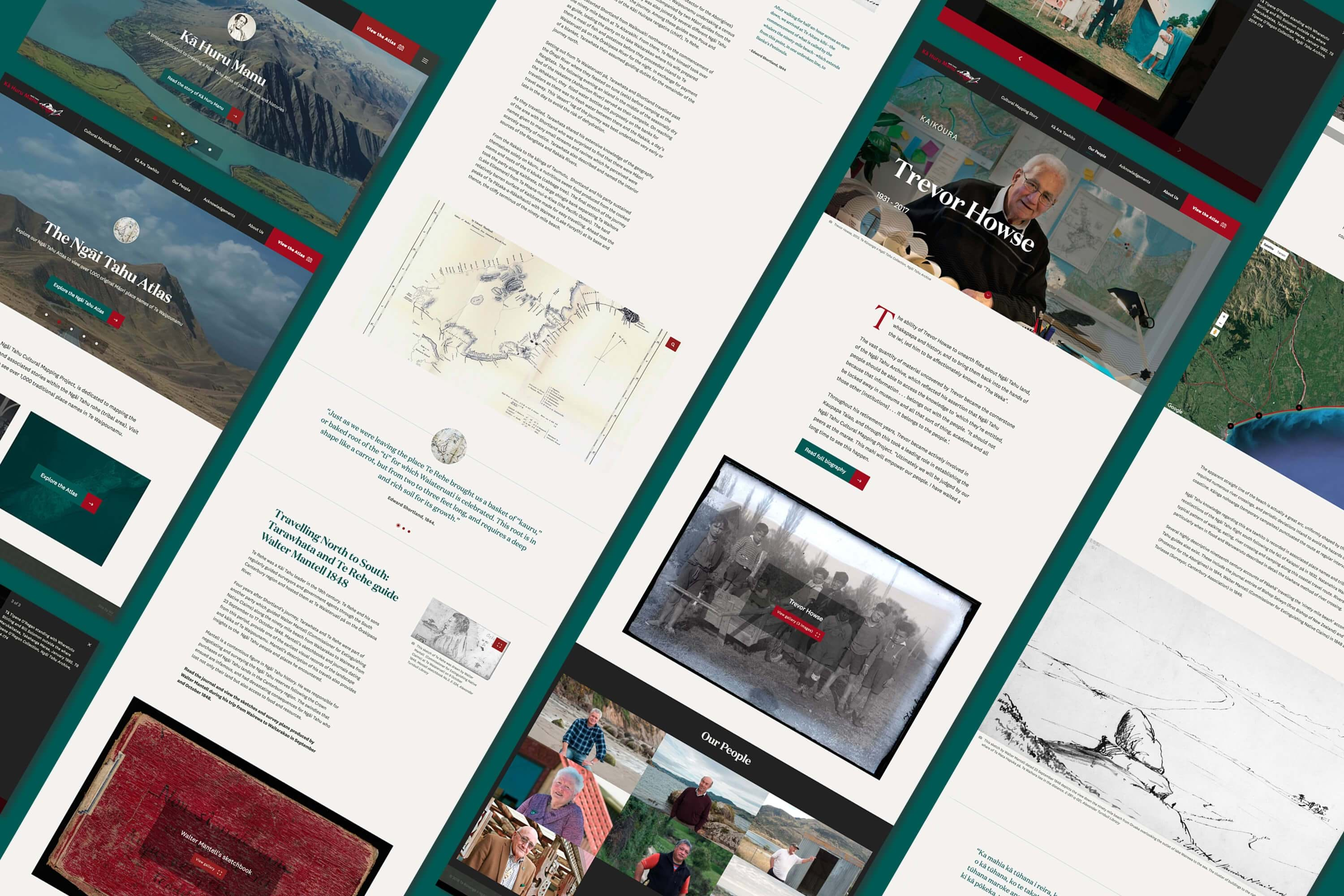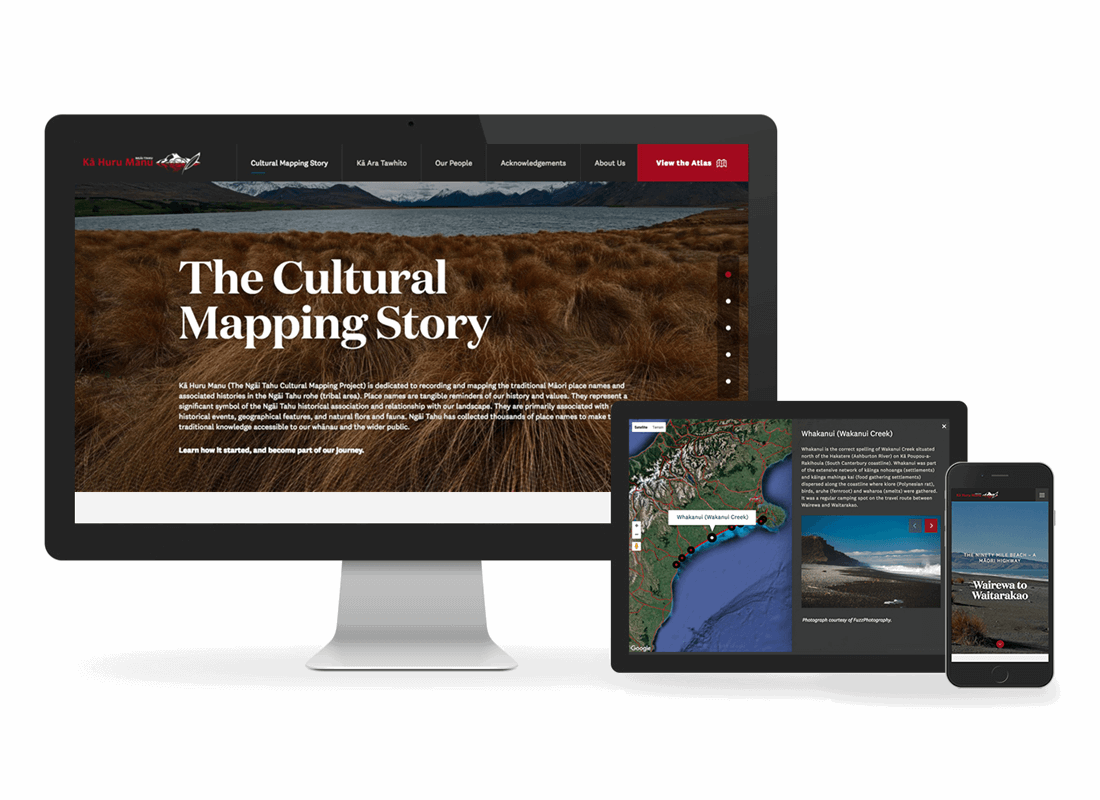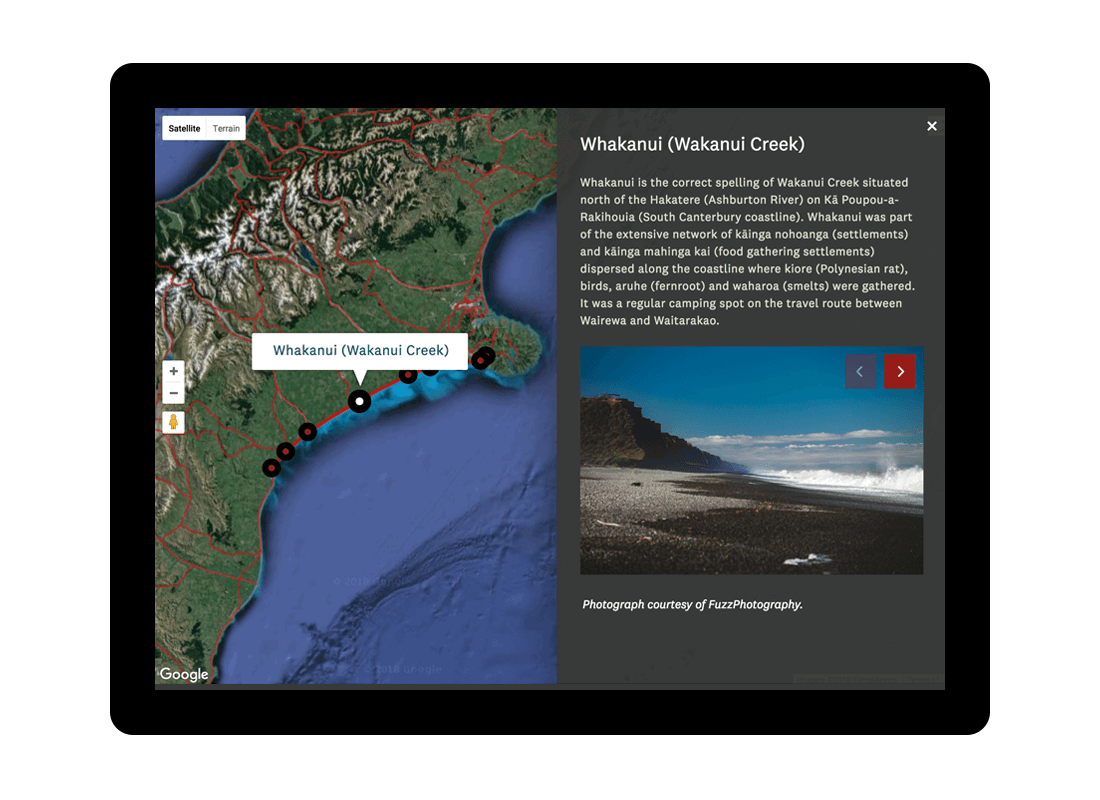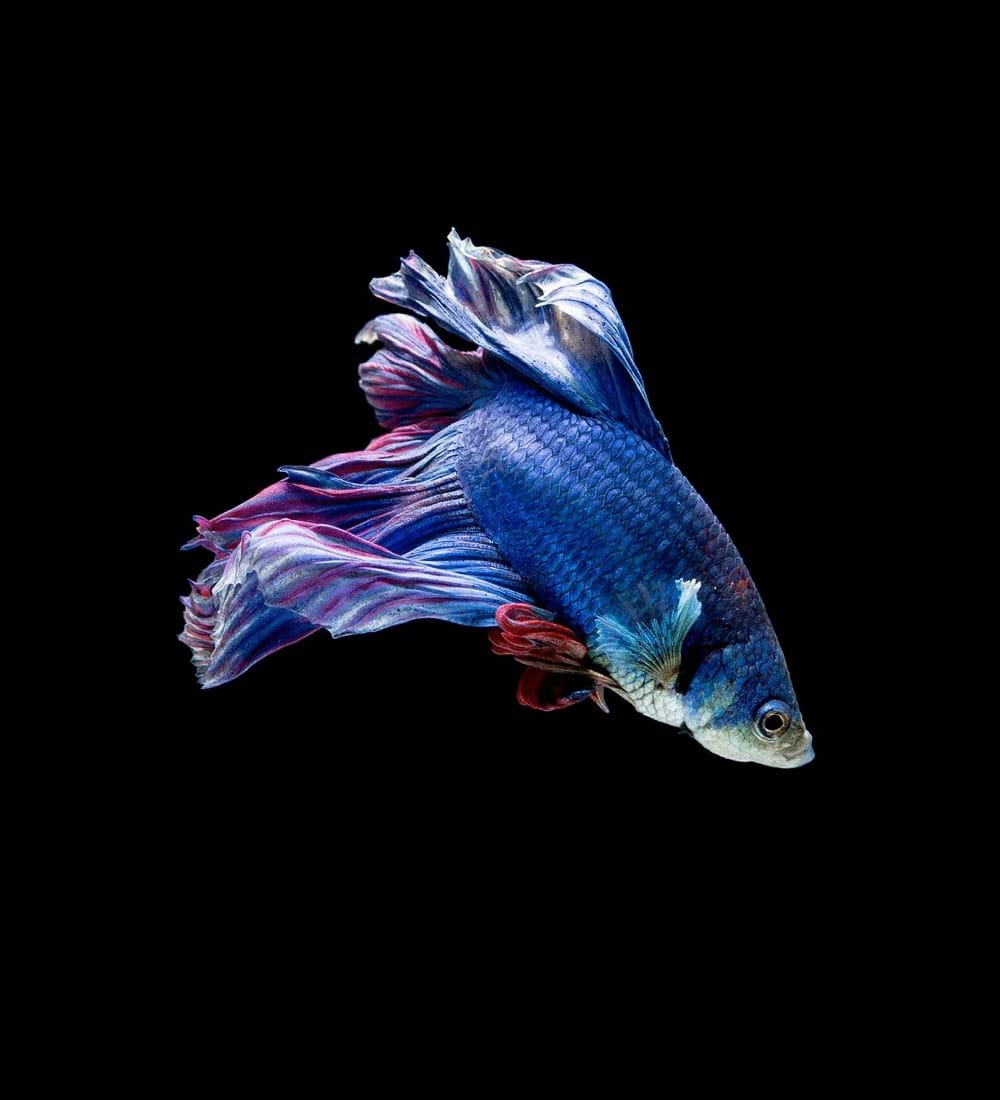Menu
mapping culture
Showcasing culture with Ngāi Tahu through a digital mapping project
Kā Huru Manu, the Ngāi Tahu Cultural Mapping Project, is dedicated to mapping the traditional Māori place names and associated stories within the Ngāi Tahu rohe (tribal area). Place names are tangible reminders of the Ngāi Tahu relationship with the landscape of Te Waipounamu.
Over 1,500 place names have been mapped and fully referenced from whānau manuscripts, published books, 19th century maps, newspaper articles and a vast array of unpublished material. The Kā Huru Manu website provides open access to these important cultural memories to tell the story behind the project and celebrate the people who have been involved.
Kā Huru Manu was initiated in 2007 by Ngāi Tahu kaumātua to reassert Ngāi Tahu mana over the landscape, and record Ngāi Tahu history for future generations. Over 1,500 traditional Māori place names were recorded using large scale topographic maps, but in 2012 tribal members expressed a desire to utilise the cultural mapping information to create a publicly available digital Ngāi Tahu atlas.
A specific “Ingoa Wāhi” database was built and connected to the mapping application, ArcGIS. As work progressed, Te Rūnanga o Ngāi Tahu (TRoNT) approached NV Interactive with clear ideas around the design, content, and architecture of a website to host the much anticipated digital atlas. We built the website infrastructure and project-managed the website development, while Ngāi Tahu developed the GIS technology and TRoNT staff and Ngāi Tahu whānui populated the website with rich audio-visual, textual, and spatial content.

The story behind the project
We used biographies, beautiful landscape photography, full screen images, photos from the archives, illustrations and geographical points, displayed on a google map to feature the significant places for the Ngāi Tahu people.

Documenting significant places
Recording and mapping generations of historical data to create a precious and open online resource accessible to all.

Modular approach
The art of informative storytelling, using a flexible page structure along with crafted content modules. It’s highly visual through the simple application of photography and typography, and content automatically scales to fit on multiple devices.


 Share
Share

